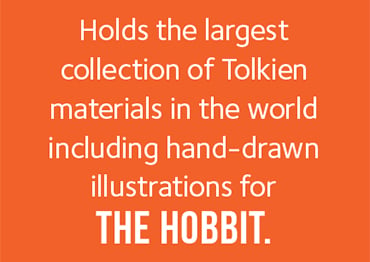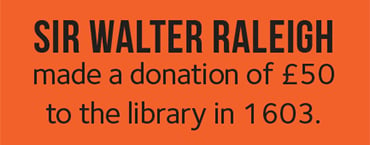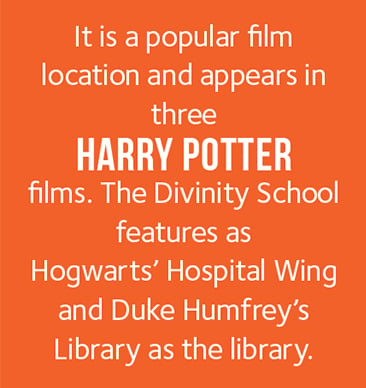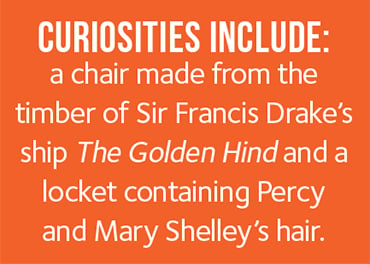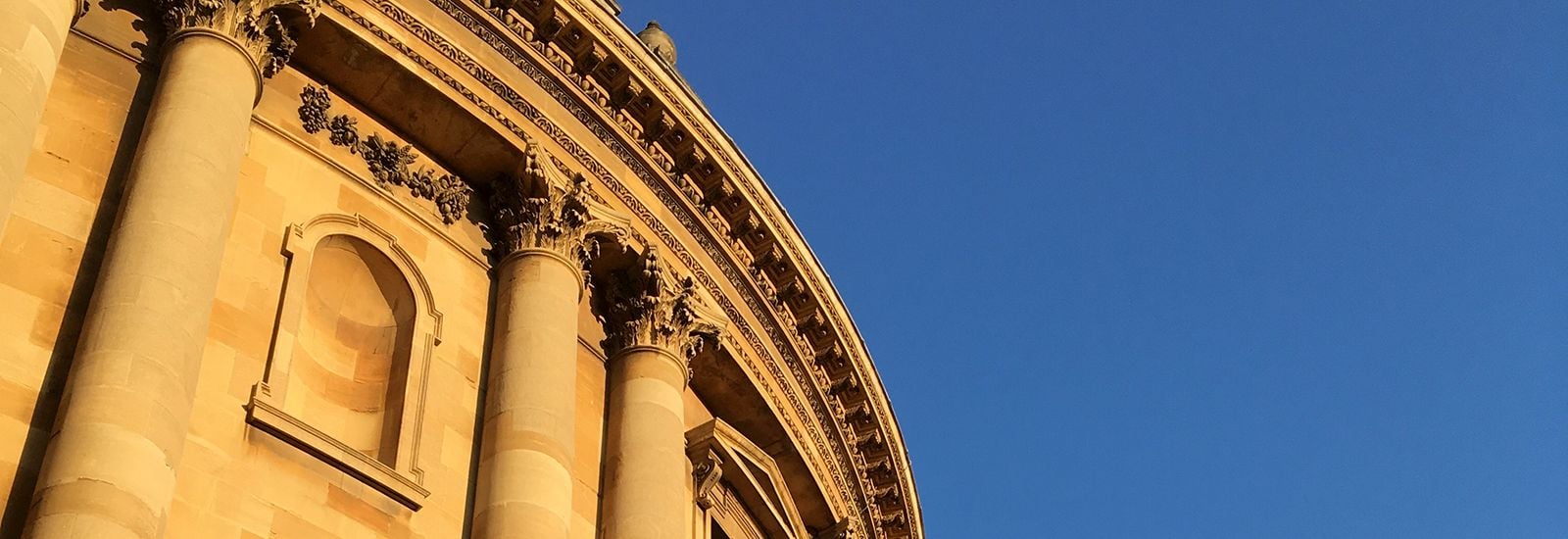
Learning resources
Oxford's learning resources are world-class, and as a student, you have free access to them all. This means that you will very rarely have to spend money on academic books of your own, or pay to have access to the other resources that you might need as part of your studies.
You will also have the chance to study in some truly inspiring buildings, including the iconic Bodleian Libraries.
Over 100 libraries
Oxford’s libraries are among the most celebrated, not only for their incomparable collections of books and manuscripts, but also for their buildings, some of which have remained in continuous use since the Middle Ages.
The Bodleian Libraries include major research libraries, department and faculty libraries and, of course, the principal University library – the Bodleian Library. As well as the main group of Bodleian Libraries, there are other University libraries and a library in every college. From beautiful and historic reading rooms to modern library spaces designed for comfort and flexibility, we offer an incredibly wide range of places for you to read, write and think.
The Bodleian Library is one of the oldest libraries in Europe, and in Britain is second in size only to the British Library. It is also one of six legal deposit libraries in the UK so can request a copy of any item (including digital and online) published in the UK or Ireland.
All this means that as an Oxford student, it is possible to complete your entire degree without having to buy a single book on your reading lists, and you will be able to study in some of the best resourced and most inspiring places in the world.
Sitting in the Bodleian Library at the same desk that might once have been occupied by John Locke and Robert Hooke, I feel part of the University's rich history.
Olinga
College libraries open 24/7
Many college libraries are open 24 hours a day (just in case you have a late-night essay crisis) during term time.
There are over 4,000 study spaces in the main libraries, and there are also a vast number of online resources available to students, including databases, books, reference materials and journals.
Help finding what you need
If you're not sure where to start, the library staff in your own college or in the Bodleian Libraries are on hand to help. Talk to a member of staff in one of our libraries, use the Bodleian Libraries' Live Chat service or the Reader Services team.
Facts and figures
- There are dedicated libraries for all the subjects taught at the University, plus many other related fields.
- The Bodleian Libraries hold over 13 million printed items and provide access to over 177,000 e-journals and 1.5 million e-books.
- As well as books, the University holds remarkable collections of manuscripts, rare books, maps and music.
- The Bodleian Libraries have been featured in numerous films and TV series, from Harry Potter to the X-Men; The Crown to The Golden Compass.
State-of-the-art laboratories and equipment
Oxford's facilities for studying and exploring science are amongst the best equipped and most advanced in the UK. Spread across the departments of Mathematical, Physical and Life Sciences, Medical Sciences, and Social Sciences, students can take advantage of the enormous range of laboratories and research equipment available.
Oxford University has invested over £400 million over the past ten years into its science facilities and infrastructure. One of our newest facilities is the Beecroft Building, a state-of-the-art laboratory and teaching facility for the Department of Physics, which will create a space for discussion, collaboration and cutting-edge science.
Here are just some of the facilities we have available:
- one of the largest magnetic resonance facilities in the UK
- one of the largest and best-equipped mass spectrometry labs in the UK
- a Becton and Dickenson 3-colour flow cytometer (FACScalibur)
- access to a Diamond Light Source and ISIS neutron source (at Harwell)
- facilities to study X-ray crystallography, surface analysis, ESR spectroscopy, mass spectrometry, NMR spectroscopy, stable isotope analysis, electron micro-analysis, biophysics, high-resolution microscopy, protein crystallisation and proteomics
'Laboratories with Leaves'
Wytham Woods is 1,000 acres of ancient semi-woodland and is a designated Site of Special Scientific Interest.
With over 500 species of plants, a wealth of woodland habitats and over 800 species of butterflies and moths, it is one of the most researched pieces of land in the world.
The Arboretum is a biodiversity hotspot with its exceptional collection of rare trees, including some of the oldest redwoods in the UK. It has 63 acres of UK wildflower meadow, which supports diverse insect, mammal and bird populations. The Arboretum is also actively involved in research and ex situ conservation projects.
Thousands of amazing art and artefacts and award-winning architecture
Oxford's researchers have been collecting works of art, fascinating cultural objects and specimens from the natural world, for many hundreds of years. The data represented by these objects are used every day by students and academic staff to inform their research. Together, the University's four famous museums hold over 8.5 million objects and specimens amid spectacular and award-winning architecture.
Free priority access
Students at the University have priority access to these important collections, and they offer an extra set of resources for helping you with your studies.
Although the museums can be used by everyone, they are used particularly extensively by students on the following courses: Archaeology and Anthropology, Biology, Classical Archaeology and Ancient History, Classics, Earth Sciences, History and History of Art.
Oxford's world-famous museums and collections
Here are just some of the resources you will have free access to:
- the Ashmolean Museum is Oxford’s museum of Art & Archaeology, with collections ranging from Egyptian mummies to contemporary art. Entry is free, with various events taking place throughout the year. Oxford students also get free entry to ticketed special exhibitions. The Academic Engagement Programme offers opportunities for collections-based learning and research to undergraduates and graduates in a wide range of disciplines.
- the Museum of Natural History houses Oxford’s internationally significant collections of geological and zoological specimens, including the Oxford dodo and the first scientifically described dinosaur.
- the History of Science Museum is home to an extensive collection of scientific inventions, devices and instruments from different cultures, places and times in human history.
- the Pitt Rivers Museum has over 700,000 objects, including photographs, film, manuscripts, and archaeological and ethnographic objects
- the Christ Church Picture Gallery houses more than 300 Old Master paintings and 2000 drawings
- the magnificent and much-loved Bate Collection holds 1,000 instruments dating from the Renaissance and the Baroque to modern times.
- Together the Botanic Garden and Harcourt Arboretum hold over 6,000 types of plant, some of which are grown nowhere else, providing free access for students, with collection-based learning and research for both undergraduates and postgraduates across the two sites. The Garden has extensive medicinal plant collections and is actively involved in research into biomimicry, biodiversity in floristic hotspots and evolutionary genetics, and is cultivating a parasitic plant collection. The Arboretum, located just south of the city, comprises over 130 acres and contains some of the world’s rarest trees.
Super-fast IT at Oxford
Don't be fooled by the age of some of our buildings - Oxford's IT infrastructure is super-fast and available to all our students. Whether you are using your own laptop or device, or one of the hundreds of computers around the University, you'll be able to connect to the University network practically anywhere around the centre of Oxford.
Here are some facts and figures about using IT at Oxford:
- the University’s network (including colleges and departments) is one of the largest private networks in the UK
- Oxford's network serves 40,000 users in term time and carries enough data to stream over 23,000 HD films every day
- the network connects 150,000 unique devices every month and delivers millions of emails every week
- PCs are available for students to use in libraries, departments, and colleges around the University
- you can also use our eduroam Wi-Fi to connect your own laptop or mobile device to the internet, wherever you are in the University
- lots of software and applications are available to students for free - including Office 365, email and virus protection
- over 13,000 recordings of brilliant lectures, interviews, conversations and much more are available on our podcasts website and on Apple Podcasts
- every student is able to access free or discounted digital skills courses through our IT Learning Centre
- course materials, tools, and lecture recordings are available in Canvas, our virtual learning environment
Getting started
Our Getting started webpages have all the information you need about what to bring and how to get started with IT at Oxford, as well as how to get help if you need it.
The University Language Centre
Learning a language (or keeping up a language you already speak) is something that many students want to do - either as part of their course, to enable them to:
- work or study abroad
- improve job prospects
- broaden their research field
- or just for fun.
The University has language classes and resources that are suitable for everyone. International students can improve their academic English on a pre-sessional summer course before they arrive or whilst on their course.
Here are some facts and figures about language learning at Oxford:
- the University Language Centre offers courses in Arabic, Chinese (Mandarin), Dutch, French, German, Greek, Italian, Japanese, Portuguese, Russian and Spanish
- Academic English classes in written and spoken communication skills, and writing tutorials, are available to all students
- classes take place at different times during the day and early evening, in term and at the end of term running into the early vacation, so they're easier to fit around your other studies
- classes are offered online and in-person, all supported by online resources
- you can offer to teach another student your native language, in exchange for support with a different language that you'd like to learn through the Virtual Language Centre, where individual language Online Meet Ups are also offered each term.
And if learning a language has given you a passion for a country you can always see if there's a club or society that might help you explore even more of that culture.

